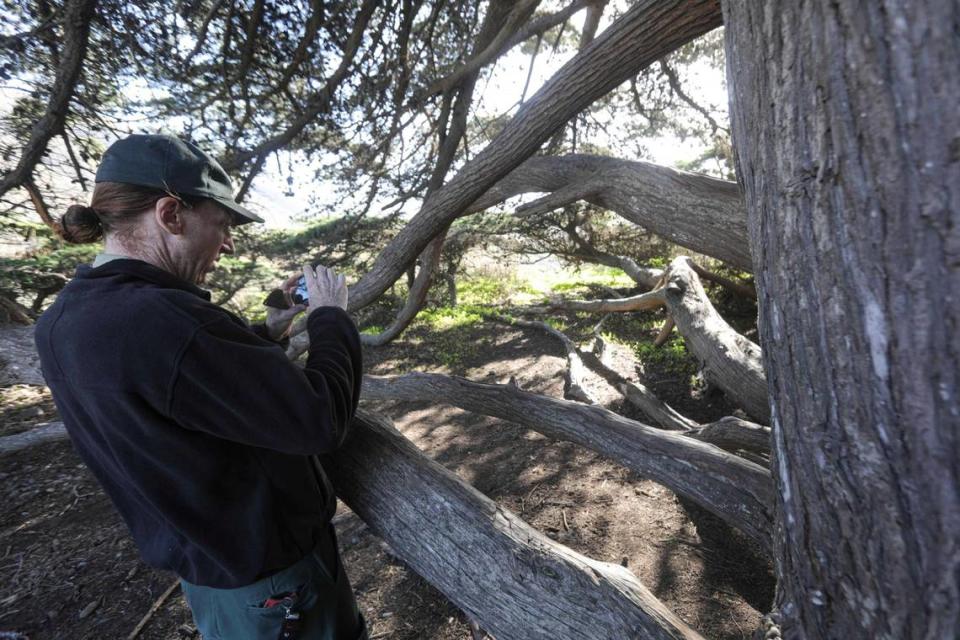Free camping at popular SLO County beach could end. Here’s what you need to know
The growing popularity of free overnight camping on a rugged beach at the edge of the Big Sur coast has forced the U.S. Forest Service to consider at least temporarily prohibiting the activity.
“The beach is getting unprecedented use,” said Los Padres National Forest’s Monterey District Ranger John “Fin” Eifert. “And that means we have human waste issues, trash issues and homeless issues.”
San Carpoforo Creek Beach is a remote stretch of shoreline located along Highway 1 north of San Simeon, just before the road rises toward Ragged Point. It’s home to the protected western snowy plover, and bald eagles, elephant seals and other wildlife are often spotted whenever the beach is uncrowded by colorful camping tents.
However, its rising popularity over the past five years has caused habitat destruction, leading Eifert and others to worry about the future of the beach’s natural beauty.
“This is one of the classic examples of outdoor recreation clashing with resource protection,” said Jeff Kuyper, executive director of the Los Padres ForestWatch.
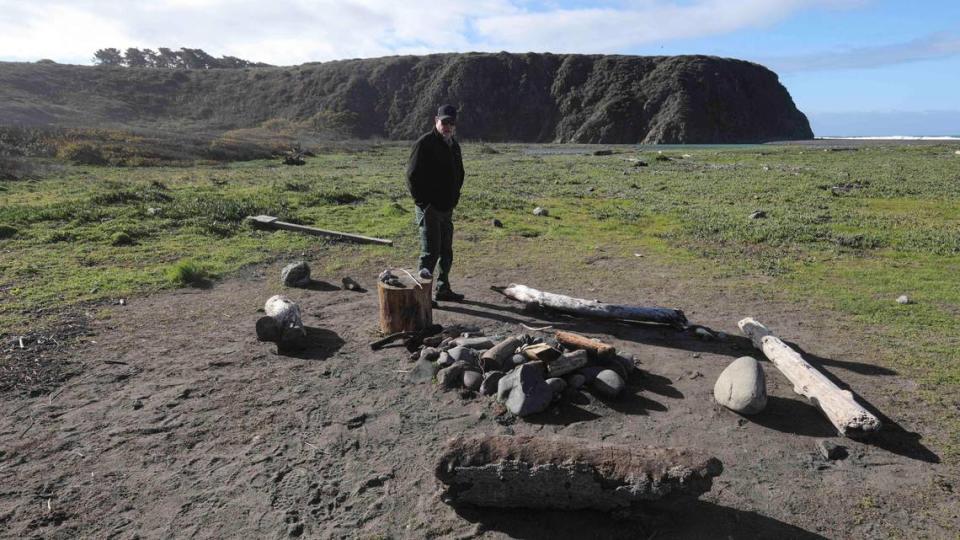
Eifert is now working on a proposal to at least temporarily prohibit overnight camping and campfires at San Carpoforo.
A temporary ban — possibly of about two years — would give him and other staff at the Forest Service time to integrate the beach into the Forest Service’s long-term visitor use management plan for the region and possibly open it back up to camping.
Eifert’s proposal to temporarily stop camping at San Carpoforo Creek Beach must go before the California Coastal Commission for approval. Perhaps in a hearing during its March meeting, the state agency will take into consideration the Forest Service’s proposal and how it may impact both the natural environment of the beach and human access.
“It’s not my intention to restrict access in any way,” Eifert said. “But the beach needs a break while we figure this out.”
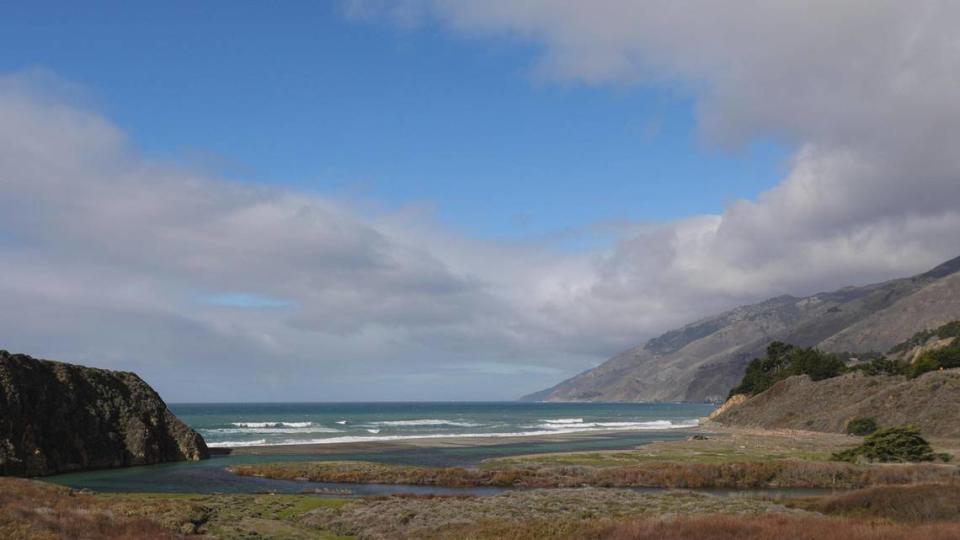
San Carpoforo Creek Beach’s popularity has skyrocketed
The centermost sliver of San Carpoforo Creek Beach was acquired by the Forest Service about 20 years ago. California State Parks owns the southern portion of the beach south of the creek while a private owner holds the northernmost portion.
Camping is only permitted on the Forest Service’s land, although the only enforcement of such is through a fence the private landowner has placed.
Travel bloggers have claimed that San Carpoforo Creek Beach provides some of the best free and dispersed camping in the region. Its location at the southern gateway to the Big Sur coast — just about an hour’s drive north of San Luis Obispo — serves as an ideal resting point before travelers continue north into the Silver Peak Wilderness.
Other Forest Service coastal camping sites along the Big Sur Coast cost $45 per night, according to Recreation.gov. Aside from San Carpoforo Creek Beach, free camping sites in the Los Padres National Forest are only accessible via miles-long hikes or driving on long, scarcely maintained roads.
“I love this wide sandy beach, because unlike most Big Sur beaches (like Sand Dollar or Pfeiffer), this location isn’t heavily trafficked and doesn’t get many visitors,” wrote travel blogger Dawn Marie in a July 2020 post.
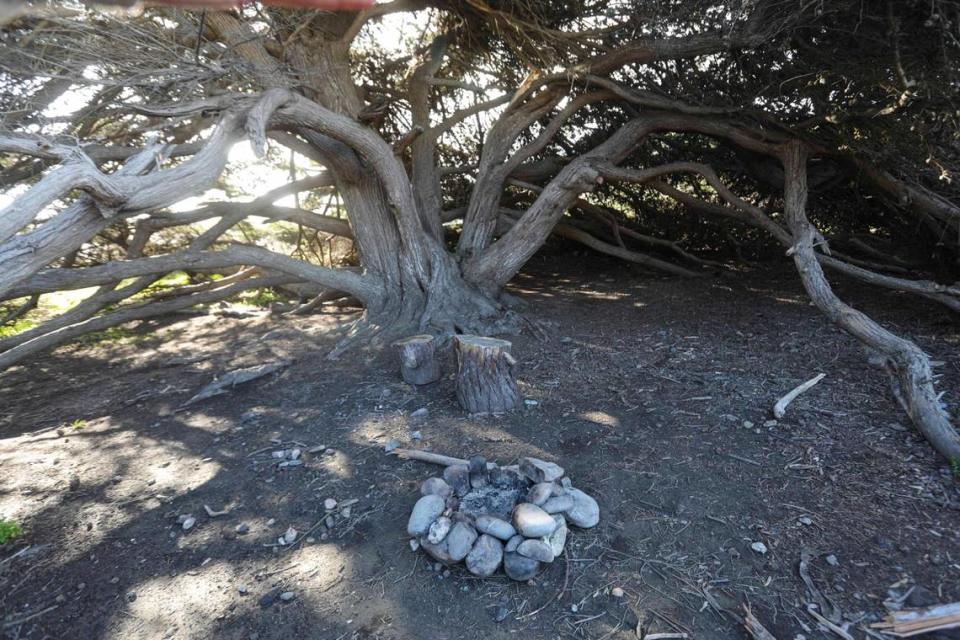
However, San Carpoforo Creek Beach’s popularity has risen in recent years, especially after the COVID-19 pandemic drove many to seek remote outdoor recreational opportunities.
Eifert said it’s common for tents to crowd the beach, with dozens of campers huddled around self-made campfire pits. During holiday weekends and university breaks, Eifert said he’s heard reports of large parties on the beach.
Beach provides critical habitat to animal species
San Carpoforo Creek Beach provides important habitat to animals — and coexistence has proven difficult as its popularity has grown.
The remote beach is often characterized by the large amount of driftwood that piles up on its dark sand.
The driftwood, used by people for campfires, provides important habitat for federally threatened snowy plovers. San Carpoforo Creek Beach is deemed critical habitat for the small shorebird by the U.S. Fish and Wildlife Service and any harm to the species is considered illegal by the Forest Service.
An environmental assessment of San Carpoforo Creek Beach found that moving driftwood and burning fires likely disturb and threaten the small snowy plovers. The assessment was conducted in 2019 by Resolute Associates, an environmental consulting firm, and contracted by a private landowner who lives near the beach.
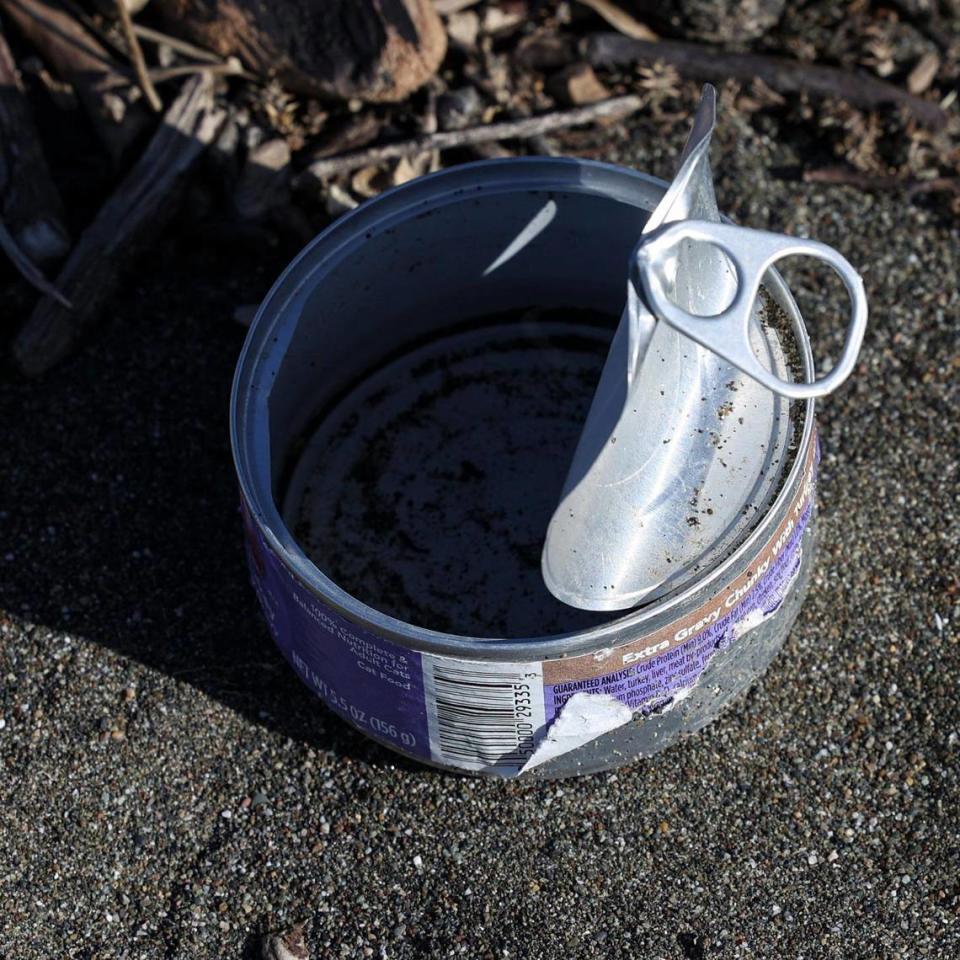
Aside from people moving driftwood and potentially stepping on nests or harming the snowy plovers, the report noted that off-leash dogs pose a problem for the small shorebirds.
“The lack of control over recreational activities on (Los Padres National Forest) lands almost certainly has affected the snowy plover,” the report said. “Public use and close proximity of human disruption, fires and camping, and dogs on this beach may be precluding successful nesting.”
Wildfire risk, no restrooms pose problems at Big Sur beach
The report also found that sparks blown inland from campfires on the beach could spark devastating wildfires in the Silver Peak Wilderness.
“The area inland of San Carpoforo is one of the few areas of the coast that haven’t burned,” said Kevin Cooper, a biologist with Resolute Associates. “That means there’s a huge stockpile of fuel there and a fire would burn much hotter.”
Additionally, there are no restroom facilities at San Carpoforo Creek Beach, meaning human feces is a persistent problem and pollutes the environment, Eifert said. Trash has also permeated nearly every corner of the beach and can be found in driftwood, buried in sand and under trees even when no campers are present.
Eifert has heard reports of unhoused individuals creating camps under the beach’s cypress tree. At times, those individuals appeared to stay for many weeks and left several pounds of trash to be cleaned up by Forest Service staff, Eifert said.
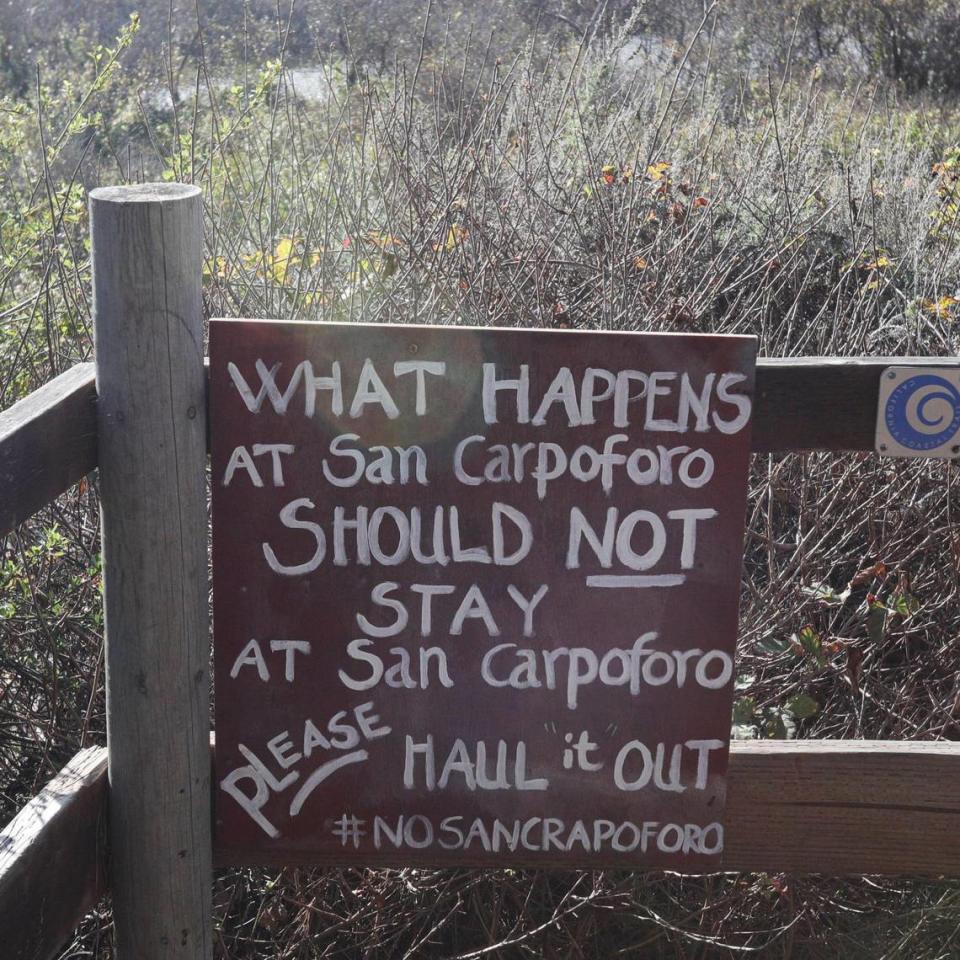
The Forest Service has been severely understaffed for decades, meaning the beach has often gone unmonitored by rangers and law enforcement, Eifert said.
One Forest Service law enforcement officer has been charged with monitoring the Monterey District’s 340,000 acres spanning up the Big Sur coast to Highway 101.
With new federal funding, the district office has hired additional staff, meaning Eifert has been able to spend time drafting a proposal for San Carpoforo Creek Beach’s future use.
Eifert is expected to present a proposal to temporarily prohibit camping on the beach and any alternative options to the Coastal Commission at its March meeting.
“We have a lot of opportunities to make camping work here,” Eifert said. “It’s a special place, I want people to be able to experience it. But how that’s going to work, I don’t know quite yet.”
